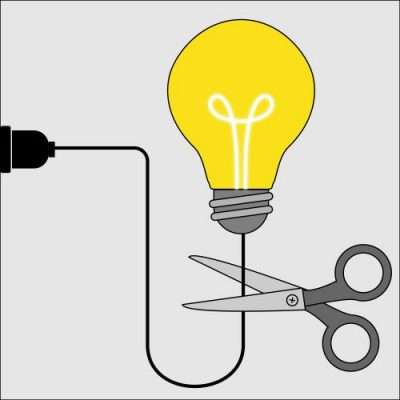I don’t know why people need to announce they can’t draw. But they do. It comes from students, parents, colleagues, administrators, and total strangers as soon as they hear I am an art educator. And it comes in such strange forms.
“I can’t draw a straight line!”
“I’m not talented in art.”
But I can’t even draw a stick figure”
“I’m just not good at Art.”
“I haven’t painted since kindergarten.”
On and on it goes. I mean, do these people show up in English class and say they aren’t talented in writing and refuse to write? Sounds kind of ludicrous, right? But I know I am preaching to the choir here. So, how do we combat this “I can’t” attitude?
Prioritize work effort
There is no art gene. Talent is overrated. Creativity is 99% perspiration and 1% inspiration. In other words, skills can be learned and need to be practiced. Give me a hard-working student any day of the week. So, be sure your grading rubric includes effort and preparation and your overall grade has a class participation element. This may include showing up on time, sitting in an assigned seat, cleaning up, staying on task, etc
“Mrs. Meyer, I have to take art to graduate but I’m not good at art!” My response? “Well, thank goodness, I have job security! You can’t draw, and I know how to teach you, sounds like a good match!” I imagine some of you have similar conversations with your students.
Another fun conversation I have repeatedly is when I introduced a project. Inevitable someone will say, “I did that already.” “Great!” I respond. “Now you have another opportunity to practice and improve your skills.” If a gym teacher asks students to warm up with jumping jacks no one raises their hand and says “I did that already.” It’s the same thing. Skills need to be repeated and practiced. I know I still do blind contour drawings to warm up. Also, as students grow and mature, they bring new skills and maturity to their work. Asking a student to make a self-portrait would yield different results if done by a kindergartner, a middle schooler, and a senior in high school.
I also spend some time explaining that even in other subjects, you will see some students catch on faster and others take more “soak time.” So, I ask students to try not to be discouraged if someone seems to draw better than they can right off the bat. Some people pick up, say, factoring polynomials right away, while someone else will need to listen to the directions a few times and practice for a while. Both are just fine and normal.
Know we can grow our brains
Our brains have an enormous capacity to grow and change at any stage of life. There is a famous study on cab drivers in London. To earn a taxi license, drivers spent years driving around the city on mopeds learning the notoriously disorganized jumble of roads. Scientists learned that this spatial training caused areas of the hippocampus to significantly increase in cab drivers. They also found that when the drivers retired and were not using the spatial pathways in their brains, the hippocampus shrank back down again. So, cool? Right? So, just by doing art, we are strengthening and growing parts of our brains.
Get comfortable with discomfort
When students say “I can’t” that provides a great time to teach perseverance. A guidance counselor at my child’s high school showed a video clip of her tween at the top of a ski slope. All the time the child is perched and preparing to push off she is saying how scared she is. And the view is terrifying. You hear a parent says, “Do you still want to? You don’t have to.” The child responds that they are scared but still wants to do it. And when the time comes, the child pushes off and soars down the hill. It was the perfect metaphor for doing anything scary. There are plenty of times in life we need to push through our fear. Growth begins when we step outside of our comfort zone.
Take it one step at a time
The only way to tackle something that is hard is by taking it one step at a time. Some people, and indeed some students, are easily overwhelmed. As a teacher, we can help by planning our lessons in incremental steps with lots of time to practice. We can’t simply create a still life and say, “Have at it.” No, we need to talk about composition and create thumbnails. Talk about scale and proportion. Use viewfinders, etc. Once they succeed, each step gets easier and the more tools they collect in their toolbox.
Develop a good attitude and work effort
You don’t really know you can’t do something well until you’ve given it a fair shake. Don’t assume failure because it can be a self-fulfilling prophecy. If you say you can’t and you make no effort, failure is an inevitable result. I often say students who fail art usually worked really hard to do it. I just don’t find students who show up and get to work consistently earning failing grades or even close to it.
It’s not all about drawing
My students who have been usually the most vocal about not drawing are middle schoolers and my introductory art classes at the high school level. Well, in those classes my projects aren’t always about observational drawings. We do things like Zentangles, Positive/Negative Animal Designs, and Paper-inspired Molas. Art is about creating and covers a wide breadth of skills. So, make sure they know that when they enter the art rooms it’s not just a place just for people to draw but a place to try out a lot of art forms. Interestingly, over the years my ceramic students never complained they couldn’t sculpt the first day they walk in. Clay is somehow different, special, and “fun.” Those kids who say they can’t draw have lost that enthusiasm somewhere along the way. Help them get it back!
So, my all-time favorite art quote is by Chuck Close. “Inspiration is for amateurs. The rest of us just show up and get to work. If you wait around for the clouds to part and a bolt of lightning to strike you in the brain, you are not going to do an awful lot of work. All the best ideas come out of the process; they come out of the work itself.” I like to use that quote because, ultimately, our students have to work to improve. No one made great art who sat around saying “I can’t.”
Find a poster of Chuck Close and this phrase here for your classroom here.
Find Lessons here and here that were great confidence boosters.




